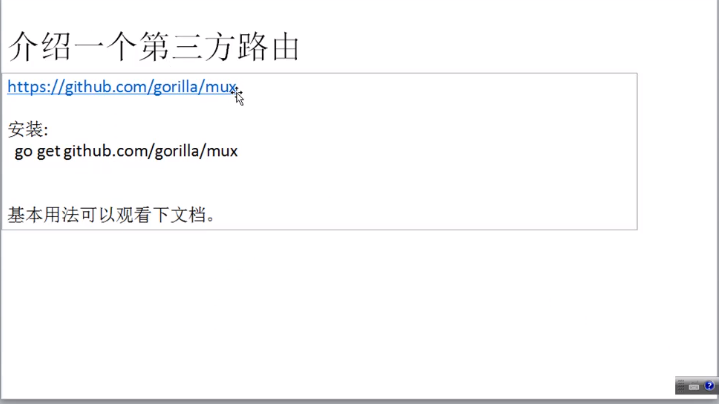

package main
import (
httptransport "github.com/go-kit/kit/transport/http"
"github.com/gorilla/mux"
"gomicro/Services"
"net/http"
)
func main() {
user := Services.UserService{}
endp := Services.GenUserEnPoint(user)
serverHandler := httptransport.NewServer(endp, Services.DecodeUserRequest, Services.EncodeUserResponse) //使用go kit创建server传入我们之前定义的两个解析函数
r := mux.NewRouter() //使用mux来使服务支持路由
//r.Handle(`/user/{uid:\d+}`, serverHandler) //这种写法支持多种请求方法,访问Examp: http://localhost:8080/user/121便可以访问
r.Methods("GET").Path(`/user/{uid:\d+}`).Handler(serverHandler) //这种写法限定了请求只支持GET方法
http.ListenAndServe(":8080", r)
}
Decode函数需要重新写了,因为取参的方式变了
func DecodeUserRequest(c context.Context, r *http.Request) (interface{}, error) { //这个函数决定了使用哪个request来请求
vars := mux.Vars(r) //通过这个返回一个map,map中存放的是参数key和值,因为我们路由地址是这样的/user/{uid:\d+},索引参数是uid,访问Examp: http://localhost:8080/user/121,所以值为121
if uid, ok := vars["uid"]; ok { //
uid, _ := strconv.Atoi(uid)
return UserRequest{Uid: uid}, nil
}
return nil, errors.New("参数错误")
}

